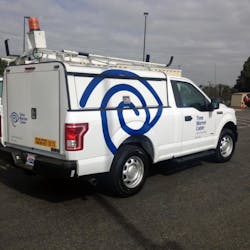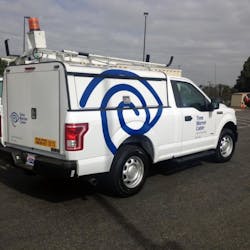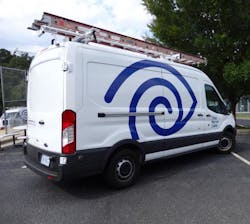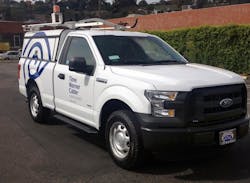Certainly, using less energy, reducing landfill waste, and switching to alternatively fueled vehicles (AFVs) are just some of the many “earth-friendly” strategies out there.
But if they end up hiking the operating budgets of both families and businesses, they won’t be viewed as being very “friendly” and will face all sorts of resistance.
Trucking has experienced all of this first-hand, starting with the nearly decade-long imposition of exhaust emission reduction rules and now with fuel economy mandates.
Yet lost in all the pencil-pushing by the Environmental Protection Agency (EPA) and other regulatory bodies (notably the California Air Resources Board or “CARB”) is that if you leave businesses – and especially fleets – alone, by and large, they’ll come with effective “green” solutions on their own that simultaneously reduce their costs as well.
Take Time Warner Cable, for example:
- The company saved 267 metric tons of carbon dioxide-equivalent (CO2e) by recycling 100% of unused copper, 95% of cardboard and 75% of Styrofoam and packaging materials. That’s 76.04 metric tons of copper, cardboard and wood pallets diverted from landfills in 2013 alone.
- TWC also made Ford Motor Co.’s Fusion Hybrid its standard passenger car, achieving a 33% increase in fuel efficiency and saving a future estimate of 30,000 gallons of gasoline and 210 tons of CO2e monthly.
- The company’s fleet is also witching to new Ford Transit and F-150 pickups to boost fuel savings further. For example, it’s replaced 173 NYC vans with new Transit Connects, saving 553 gallons of fuel or some $2,245 and 5.35 tons of carbon per month.
- TWC and 14 other cable, satellite and telephone companies and vendors put into effect a voluntary five-year “set-top box energy conservation agreement” back in 2012. It’s expected to result in annual residential electricity savings across the Multichannel Video Programming Distributor (MVPD) industry of $1.5 billion or more by the end of 2017.
- Altogether, TWC’s “Go Green” initiatives chopped the company’s “carbon intensity” by 38% over the past two years, far exceeding its goal of a 15% reduction set in 2012.
TWC, by the way, operates more than 20,600 active vehicles, 50% of which are vans, with the fleet adding more than 400 diesel-powered full-size Transit vans and 200 compact Transit Connect vans in recent years
That diesel engine changeup for its full-size Transit models is a big fuel saver, by the way, reducing overall fuel consumption by 47%.
“Diesel engines develop significantly higher levels of torque at lower engine speeds, so a lower RPM operating condition for our engines can produce as much work as a gasoline engine operating at a higher RPM,” Survant explained.
That, of course, saves fuel – and less fuel burned not only means spending less money but fewer tailpipe emissions as well, don’t you know.
TWC is also adding Ford’s new aluminum F-150 pickup to its fleet –purchasing more than 540 4x2 versions of that light truck equipped with 2.7-liter EcoBoost V-6 engines.
Again, the reasoning is pretty simple. The aluminum construction of Ford’s revamped F-150 makes it about 700 lbs. lighter than the model it’s replacing, thus helping reduce fuel consumption.The small-block 2.7-liter EcoBoost V-6, which produces 325 hp and 375 lb.-ft. of torque, also helps improve the fuel economy footprint for TWC’s fleet. That engine still gives those pickups significant payload – some 2,250 lbs. – and towing capability, some 8,500 lbs., which is enough to meet about 90% of TWC’s fleet needs. Yet it also helps those pickups achieve about
19 mpg city, 26 mpg highway and 22 mpg combined compared to the truck’s 5.0-liter V-8 engine.
Now, this is not an “instantaneous” upgrade by any means, as Survant said TWC normally transitions roughly 10% of its fleet annually.
Then again, that’s the most cost-effective way to do it – ensuring that the company gets the most value out of the vehicles it already operates before bringing in new models.
“We’re committed to reducing our impact on the environment,” Survant said. “Energy and fuel efficiency are very important to us as we continue our efforts to ensure the TWC fleet is environmentally-friendly.”
And that’s friendlier on the company‘s wallet, too.



